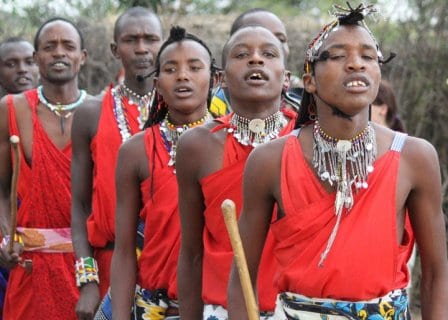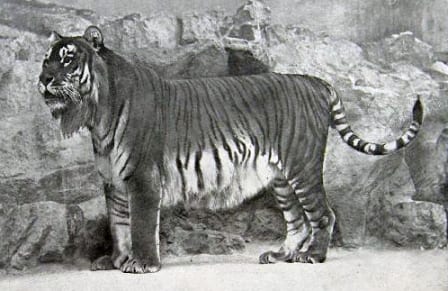The time to live life is now
By Emma-Louise Nicholls, on 7 November 2013
 As both of my parents worked in travel I guess whether you fall down in the camp of nature or on the side of nurture, eitherway I was probably destined to be a traveller myself. Although I was a late developer in this area, only travelling alone for the first time once at university, I have since clocked up 49 countries and have back of the envelope plans for well over fifty more. As a zoologist and conservationist seeing the natural world first hand is indescribable, though my background also makes me only too aware of the rapidity with which the planet is changing. I don’t just mean animals and the environment, people themselves are changing as well. It is not an uncommon site in Kenya to see Masai tribesmen in the bush wearing traditional red blankets and sandles, and herding goats whilst chatting away on their Nokia. But I feel privileged to have seen them and witnessed their lives and cultures even in this transitional state. In a few years they’ll be wearing GAP t.shirts and Nike trainers, tearing around the bush on quad bikes*. There is simply nothing like seeing mountain gorillas in the wild, being woken up in your sleeping bag by a giraffe munching leaves outside your tent, or being caught in the middle of a capuchin monkey turf war in the Amazon rainforest.
As both of my parents worked in travel I guess whether you fall down in the camp of nature or on the side of nurture, eitherway I was probably destined to be a traveller myself. Although I was a late developer in this area, only travelling alone for the first time once at university, I have since clocked up 49 countries and have back of the envelope plans for well over fifty more. As a zoologist and conservationist seeing the natural world first hand is indescribable, though my background also makes me only too aware of the rapidity with which the planet is changing. I don’t just mean animals and the environment, people themselves are changing as well. It is not an uncommon site in Kenya to see Masai tribesmen in the bush wearing traditional red blankets and sandles, and herding goats whilst chatting away on their Nokia. But I feel privileged to have seen them and witnessed their lives and cultures even in this transitional state. In a few years they’ll be wearing GAP t.shirts and Nike trainers, tearing around the bush on quad bikes*. There is simply nothing like seeing mountain gorillas in the wild, being woken up in your sleeping bag by a giraffe munching leaves outside your tent, or being caught in the middle of a capuchin monkey turf war in the Amazon rainforest.
As climate change and habitat destruction change the face of the planet, it isn’t just the well advertised potential extinctions that are the only consequence. Animal species are moving north or south accordingly, in an attempt to continue living within their preferred temperature ranges. Unusual birds are turning up in the UK, red foxes are now clashing with arctic foxes (and winning), and whale watching trips have had dramatic falls in sightings of whales and dolphins in northern Europe as changes in water temperature lead them elsewhere. It isn’t just climate change and habitat destruction of course, there are other factors contributing to the rapid decline in species’ populations such as hunting for meat, fur and the pet trade, plus the infuriating situation of animal parts acquired for ‘medicine’.
 As a traveller who should have been born 200 years ago (and probably therefore, also a man), I want to see the world as it is, before it changes. It is of course too late for many natural phenomena and countless species. Just thinking of my personal favourites- three subspecies of tiger went extinct last century, two subspecies of rhino were declared extinct last year, and as a group, sharks have one of the most rapidly declining global populations in the entire animal kingdom. This is SCARY stuff! We are currently bearing witness to the 6th global mass extinction. Mass extinction- we’re talking an event in line with the famous one at the end of the Cretaceous that wiped out (most of) the dinosaurs, and the Permian mass extinction that wiped out 90% of life on Earth (Benton, 2003). This is the scale of what we are facing. Is this blog about saving the world? Surprisingly, no. (Though I wouldn’t discourage you). This is about the here and now, not the future consequences of our actions in the here and now.
As a traveller who should have been born 200 years ago (and probably therefore, also a man), I want to see the world as it is, before it changes. It is of course too late for many natural phenomena and countless species. Just thinking of my personal favourites- three subspecies of tiger went extinct last century, two subspecies of rhino were declared extinct last year, and as a group, sharks have one of the most rapidly declining global populations in the entire animal kingdom. This is SCARY stuff! We are currently bearing witness to the 6th global mass extinction. Mass extinction- we’re talking an event in line with the famous one at the end of the Cretaceous that wiped out (most of) the dinosaurs, and the Permian mass extinction that wiped out 90% of life on Earth (Benton, 2003). This is the scale of what we are facing. Is this blog about saving the world? Surprisingly, no. (Though I wouldn’t discourage you). This is about the here and now, not the future consequences of our actions in the here and now.
Conservationists are currently fighting tooth and nail, either for specific species or entire habitats. Some of them are winning, many of them are simply in an arms race with the power shifting sides frighteningly often, some of them, sadly, are fighting a losing battle. (Though I’m not saying there’s any reason to give up.) To throw some numbers at you, because I’m a scientist and we like to do that, here are a few global populations of some critically endangered animals:
Greater one horned rhino: 3,300
Yangtzee finless porpoise: 1000-1,800
Mountain gorilla: <800
Asian lion: 450 (50% of which are in captivity)
Gharial: 200
 Yes, this is sad news, but the point I’m making is that these numbers aren’t zero. Right now in this very moment, we live in an age of bittersweet fortune. Yes, fortune. My future grandchildren will most likely never see many of the species that today are listed as ‘critically endangered’. But if you or I want to, the time is now. Sure, travelling costs money and takes time, the two greatest adversaries (apart from ourselves) of mankind. There are also of course potential costs to the environment by doing so, depending on how you as a person decide to travel. But I am all too aware that if I don’t prioritise seeing some of these things now, I simply never will. I stare in wonder at black and white photographs of long gone species such as the Caspian tiger (see image above), the thylacine or the quagga, and wonder how many species I still have the opportunity to see in 2013, that my future family never will.
Yes, this is sad news, but the point I’m making is that these numbers aren’t zero. Right now in this very moment, we live in an age of bittersweet fortune. Yes, fortune. My future grandchildren will most likely never see many of the species that today are listed as ‘critically endangered’. But if you or I want to, the time is now. Sure, travelling costs money and takes time, the two greatest adversaries (apart from ourselves) of mankind. There are also of course potential costs to the environment by doing so, depending on how you as a person decide to travel. But I am all too aware that if I don’t prioritise seeing some of these things now, I simply never will. I stare in wonder at black and white photographs of long gone species such as the Caspian tiger (see image above), the thylacine or the quagga, and wonder how many species I still have the opportunity to see in 2013, that my future family never will.
*Total speculation.
Emma-Louise Nicholls is the Curatorial Assistant at the Grant Museum of Zoology
 Close
Close

